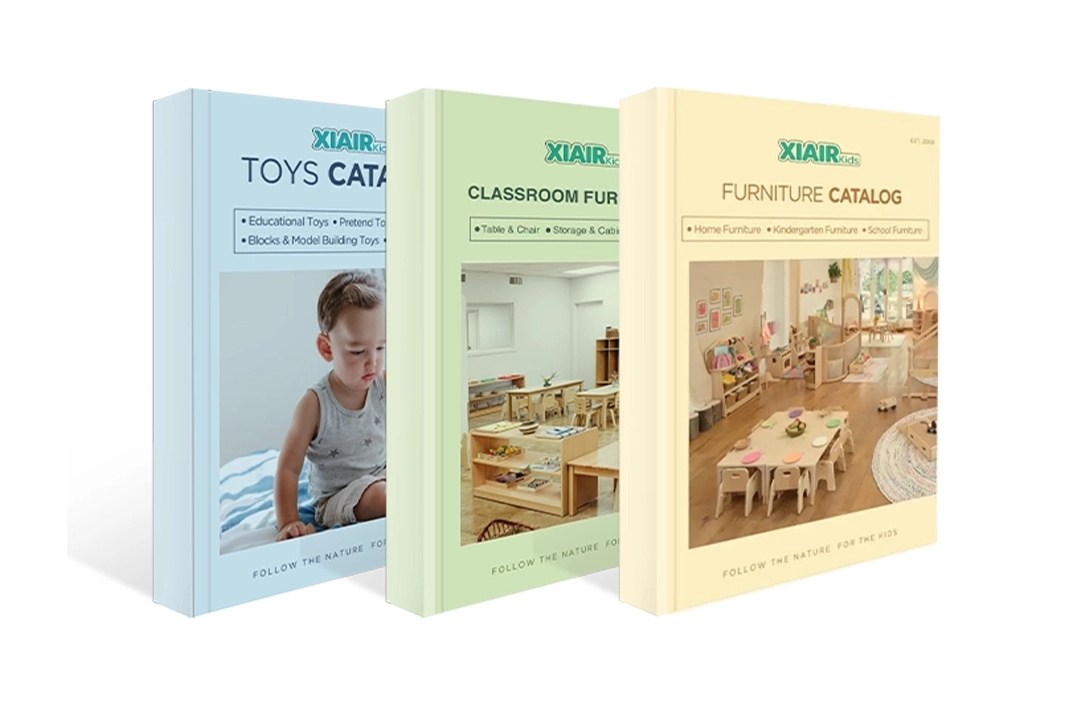Outdoor Learning
Explore our range of preschool outdoor furniture designed for safety, durability, and fun. Perfect for schoolyards or home gardens, our colorful tables, chairs, and playground equipment encourage active play and learning. Discover pieces that inspire and endure in any young child's outdoor space.
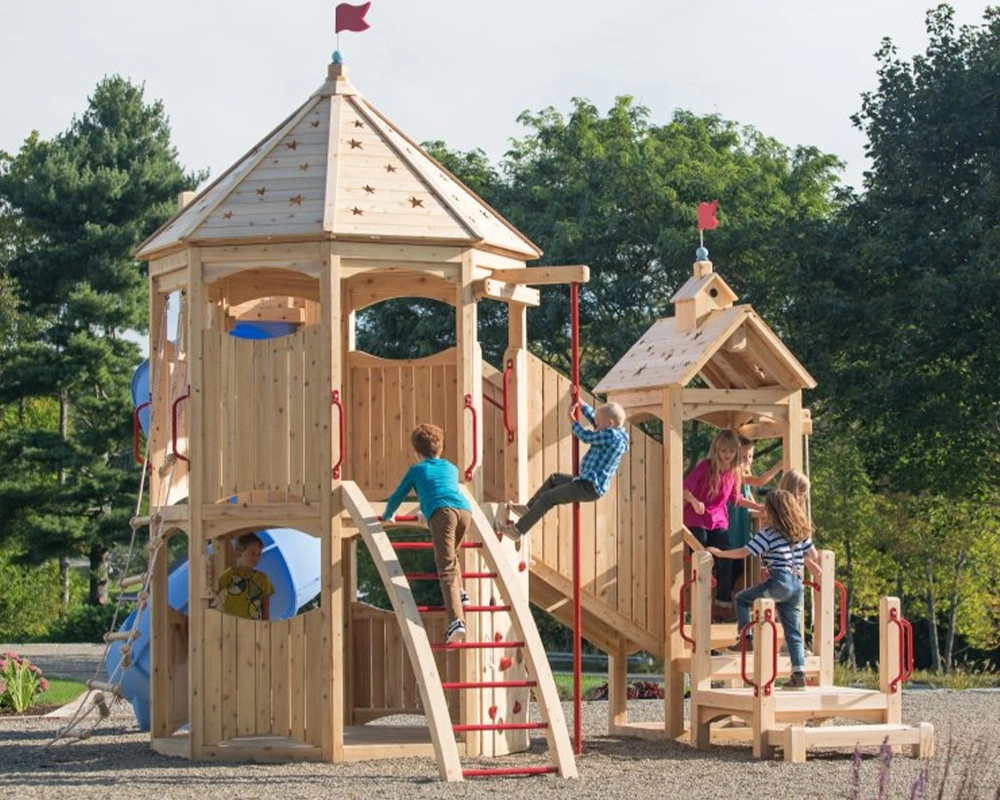
Outdoor Equipment
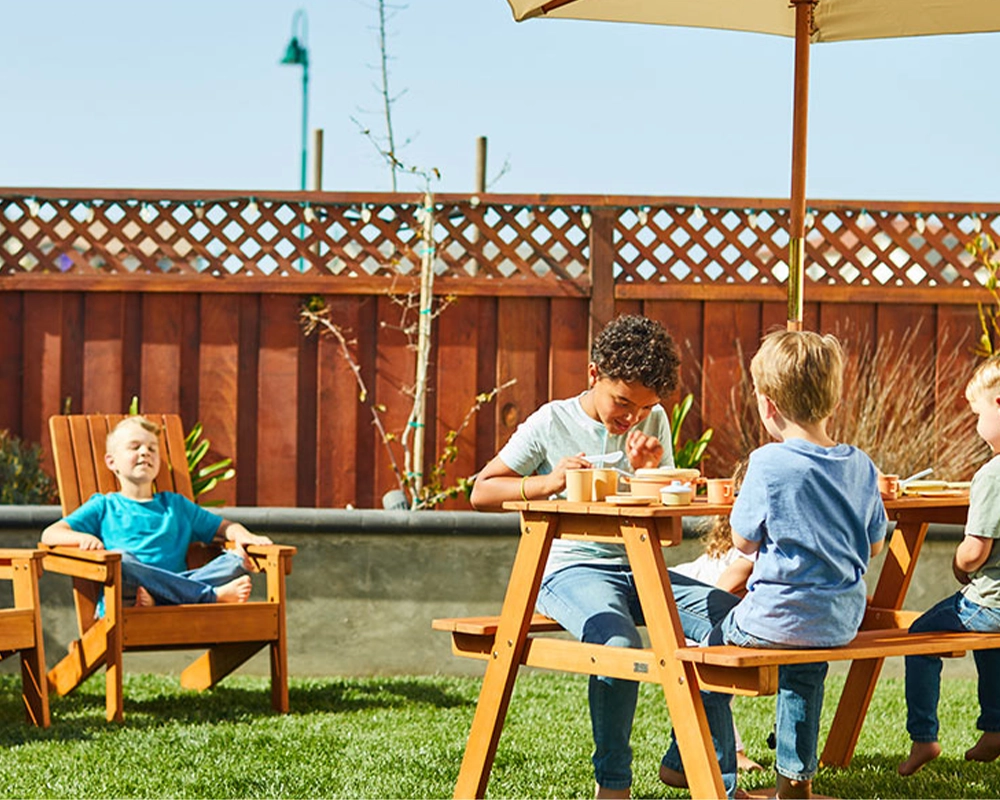
Outdoor Furniture
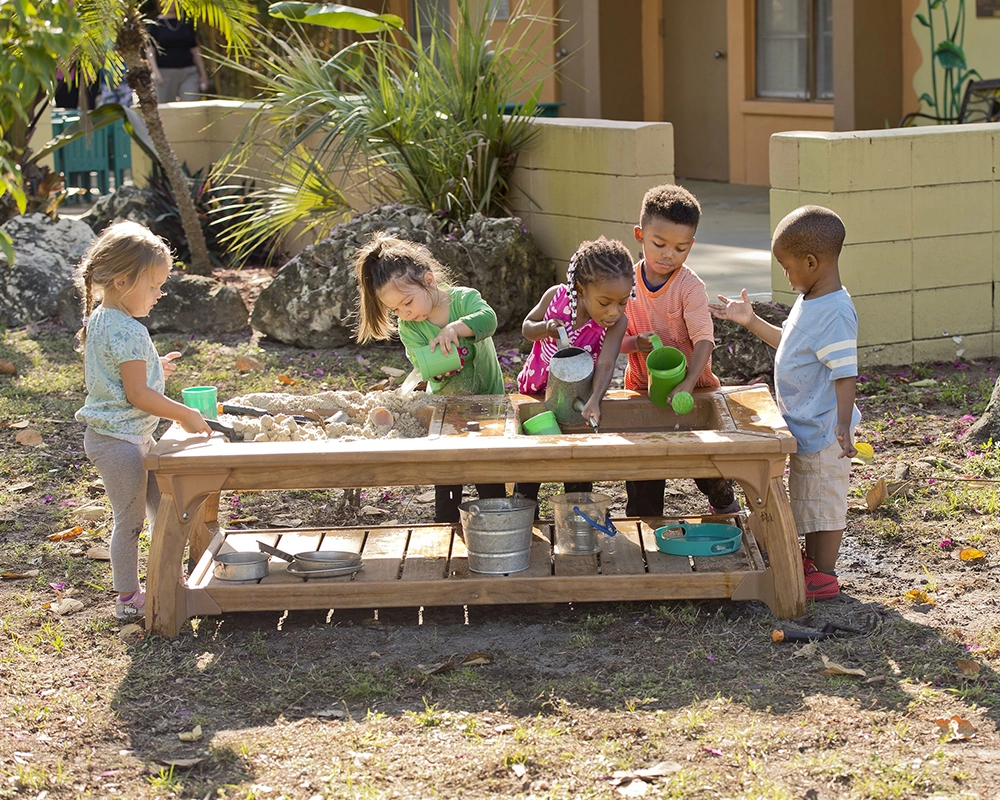
Sand & Water
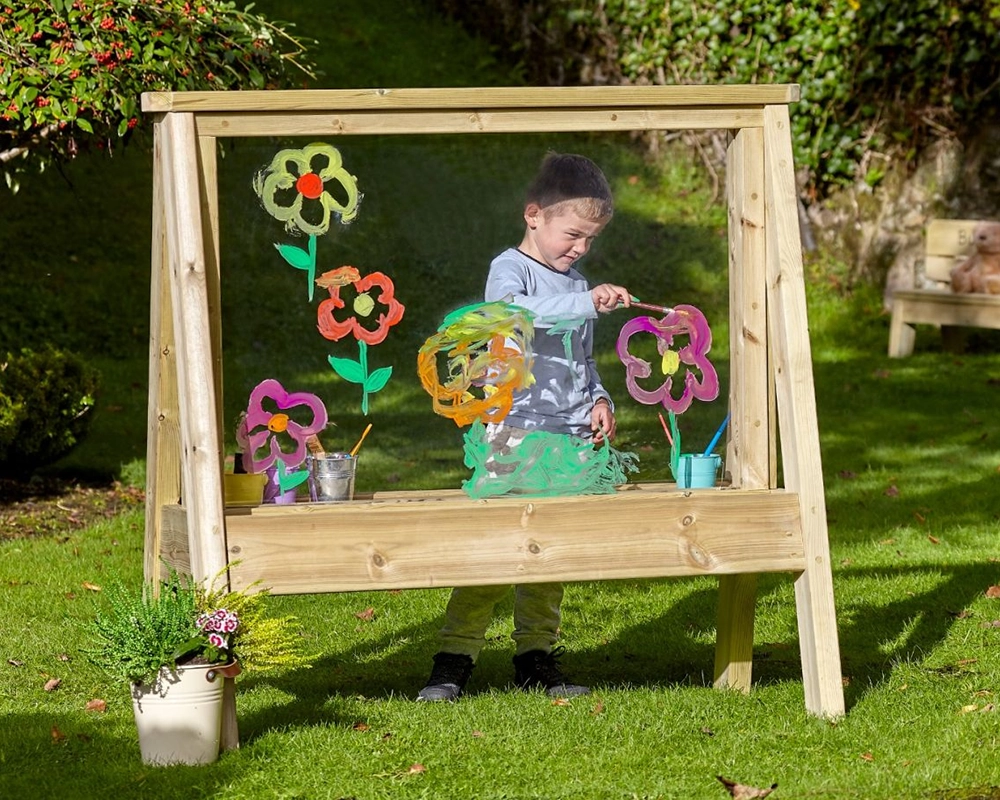
Outdoor Art
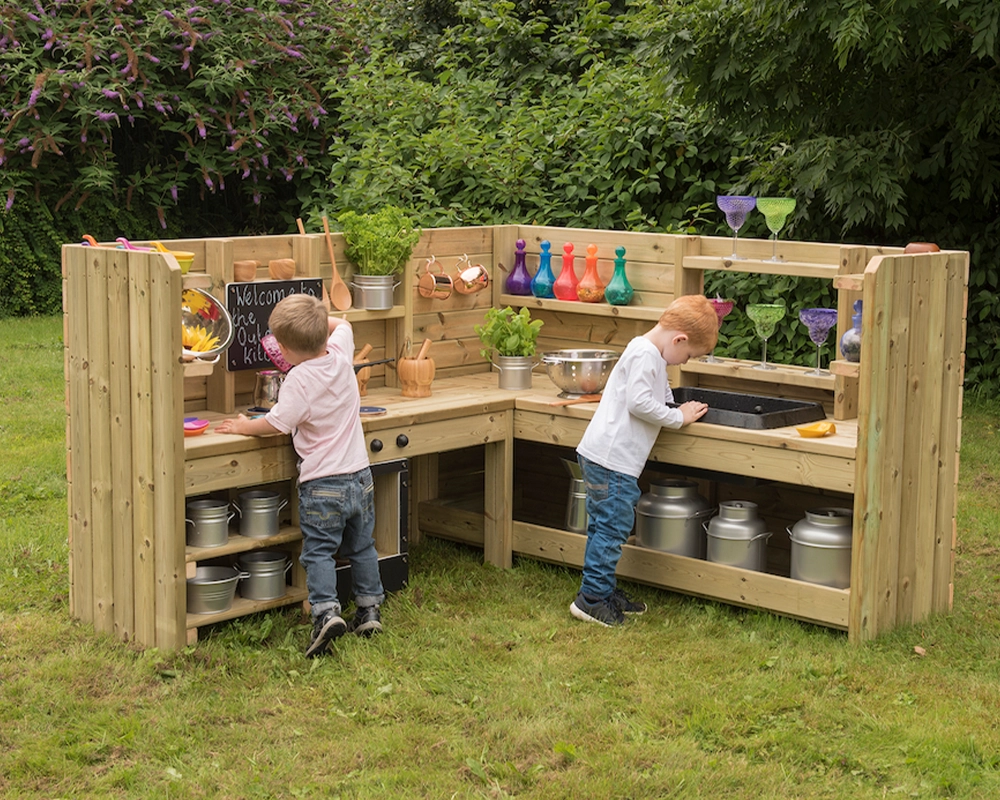
Outdoor Kitchens
Importance of Outdoor Learning for Early Childhood Education
Outdoor learning has become an essential part of early childhood education. It offers young children a dynamic environment to develop crucial skills such as problem-solving, teamwork, and emotional regulation. Outdoor learning also supports physical development by encouraging activities that promote motor skills, balance, and coordination.
By interacting with their surroundings, preschoolers develop a sense of independence and curiosity about the world around them. Studies indicate that outdoor learning can improve concentration, increase social interactions, and enhance sensory development. Incorporating outdoor learning into preschool education gives children a holistic approach to development, making them more engaged, curious, and resilient.
Physical Development
Outdoor activities encourage children to engage in natural movements like running, climbing, and balancing. These activities strengthen their muscles and help develop fine and gross motor skills essential for overall physical health and coordination.
Cognitive and Emotional Growth
Natural settings are inherently stimulating and present young learners with opportunities to solve problems. When children face challenges—like figuring out how to balance on a log—they build resilience and sharpen their decision-making abilities.
Social Skills
Outdoor play environments often encourage collaboration and teamwork. Activities like sandcastle building or group nature hunts foster cooperation, patience, and empathy. These social interactions are essential in shaping well-rounded, socially aware children.
Environmental Awareness
When children interact with plants, soil, and various natural elements, they begin to understand their role in the ecosystem. Through activities like planting or observing insects, they develop early environmental awareness and stewardship.
Fosters Independence and Confidence
Outdoor learning allows preschoolers to make decisions independently, boosting self-confidence. For example, deciding which path to take on a nature walk or choosing how to balance on a beam teaches children to trust their judgment, which builds self-reliance over time.
Types of Outdoor Furniture for Young Children
Creating a comfortable and functional outdoor learning space requires selecting suitable types of furniture. Preschoolers need age-appropriate, durable furniture to meet their size, strength, and developmental needs. Here are some key types of outdoor furniture essential for a well-rounded learning environment:
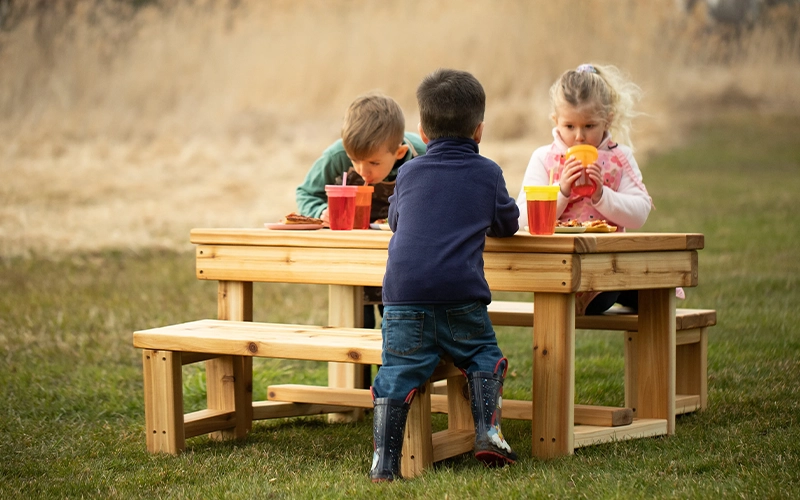
Tables and Benches
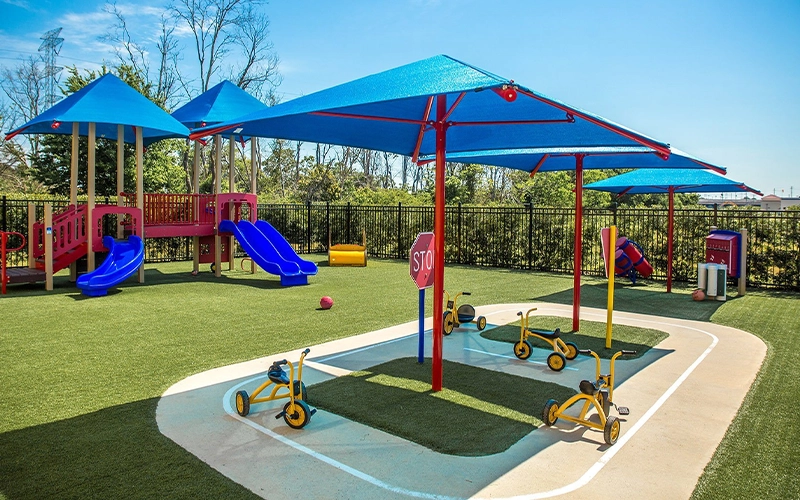
Shelters and Shaded Structures
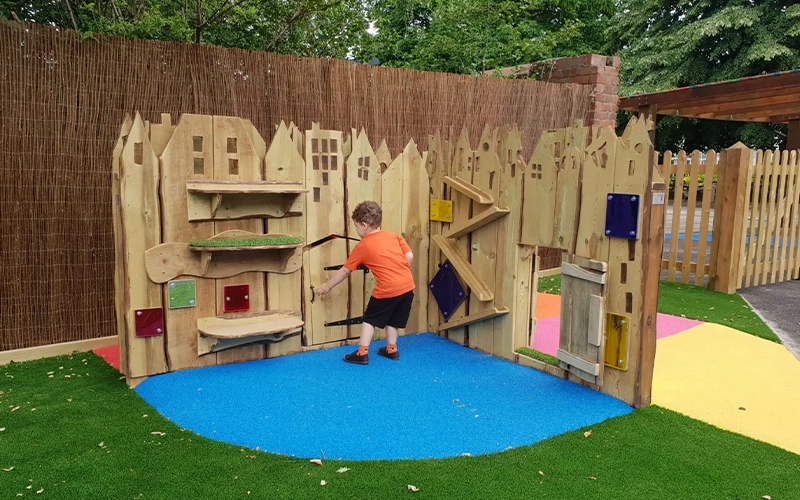
Sensory Play Stations
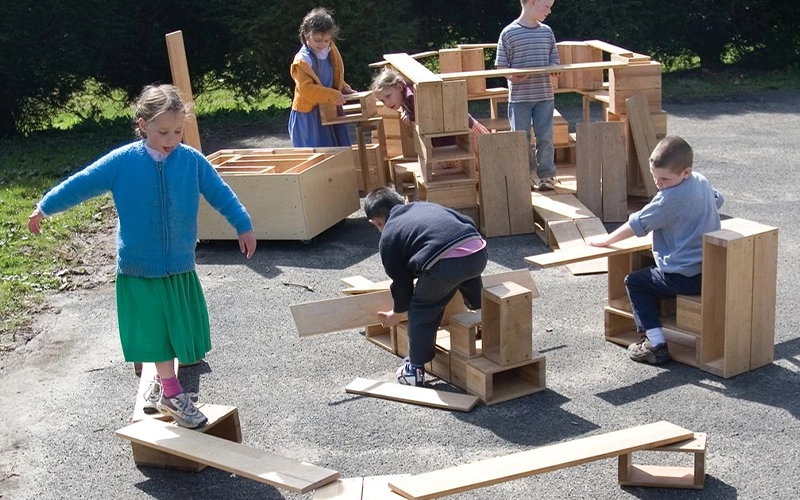
Movable Building Blocks
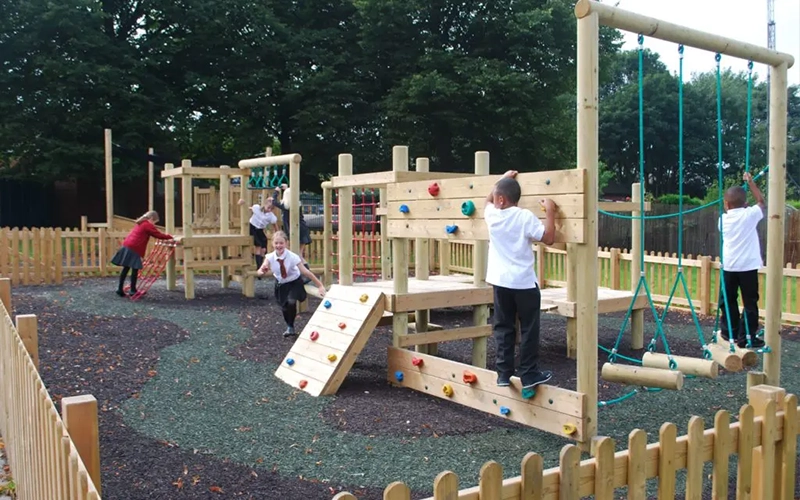
Climbing and Balancing Equipment
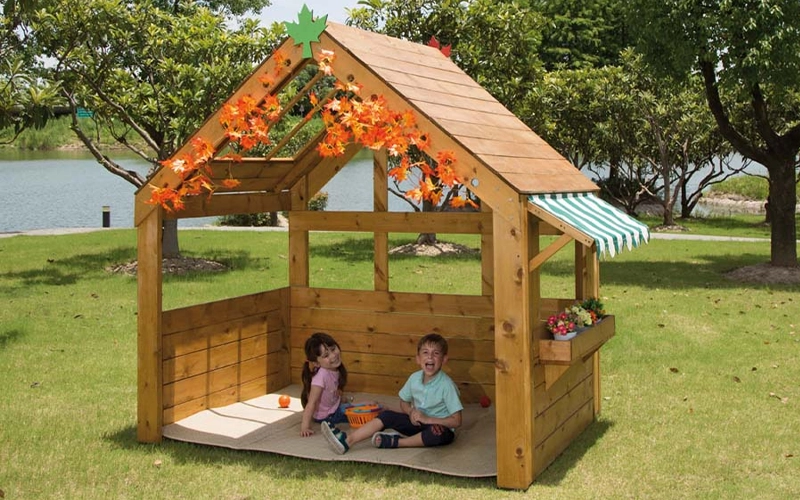
Playhouses and Hideouts
Custom Preschool Outdoor Furniture
Custom furniture can be a fantastic investment for preschools looking to create unique, engaging outdoor learning environments. Custom furniture is designed specifically to meet preschoolers' developmental and safety needs while fitting a particular space's aesthetic and functional requirements.
Benefits of Custom Furniture for Outdoor Learning Spaces
Tailored to Unique Spaces
Age-Appropriate Sizing and Features
Integration with Educational Themes
Sample Layout Plans Customized for Different Spaces and Educational Needs
Creating a functional outdoor learning space requires thoughtful layout planning. Different outdoor spaces require different approaches to maximize usability and engagement, from small courtyards to large open yards. Here are a few sample layout ideas tailored for various spaces and educational needs:
Compact Spaces
In smaller areas, prioritize multifunctional furniture and modular layouts. Use stackable seating, foldable tables, and wall-mounted sensory boards to conserve space. Creating distinct zones for active play, quiet reading, and group gatherings can make a small space feel more expansive.
Large Open Areas
For larger spaces, consider dividing the area into distinct zones, such as nature exploration, sensory play, and active play areas. Dedicated sections for physical activities, such as climbing and balance beams, can add excitement while providing adequate space for children to move freely.
Nature-Inspired Layouts
Nature-inspired layouts incorporate natural elements like rocks, trees, and water features into the design. This layout supports organic exploration allowing children to learn about nature firsthand. Arrange seating areas near trees and add natural pathways for easy navigation.
Urban Spaces
For schools in urban areas with limited green space, rooftop gardens, and enclosed courtyards can be transformed into effective outdoor learning environments. Urban spaces benefit from potted plants, vertical gardens, and compact sensory tables, creating a natural feel.
How Can Furniture Be Designed to Ensure Safety and Durability for Outdoor Use?
Safety and durability are essential considerations when selecting or designing outdoor furniture for preschoolers. Children interact directly with these items, so choosing materials and designs that prioritize their well-being is crucial.
Choosing Weather-Resistant Materials
Smooth Edges and Rounded Corners
Stable, Sturdy Construction
Non-Toxic Finishes
Anti-Slip Features
Get A Free Quote
Safety with Our Outdoor Classroom Furniture
- Child-Safe Materials: Our pieces use non-toxic, sustainable materials like beech, birch, and oak, ensuring every product meets safety standards.
- Eco-Friendly Options: We offer eco-friendly daycare furniture made from renewable resources for environmentally conscious settings.
- Durable and Stable: Our designs include rounded edges, stable bases, and long-lasting construction, making them ideal for any daycare or preschool setting.
Tips for Designing Outdoor Learning Spaces
Creating a dynamic outdoor learning space involves several design considerations to make the area safe, stimulating, and developmentally appropriate for preschoolers. Here are some tips to get started:
Encourage Variety in Play and Learning Activities
Incorporate Elements of Nature
Plan for Supervision-Friendly Layouts
Include Quiet and Active Zones
Use Shade and Shelter
Integrate Storage Solutions
Plan for Accessibility
Design for All-Weather Use
Considerations When Creating an Outdoor Learning Space
Designing a functional outdoor learning space for preschoolers involves careful consideration of a few key factors:
Climate and Seasonal Changes
The local climate will play a role in choosing materials and planning the layout. In areas with heavy rain, for instance, selecting waterproof or quick-dry materials is essential. Seasonal changes also mean designing a space that can adapt—adding shaded areas for summer, and materials that can withstand winter conditions.
Safety Codes and Regulations
Check local regulations and safety codes, as they may require specific types of fencing, surface materials, and equipment for early childhood education centers. Understanding these codes helps create a legally compliant and safe environment.
Space Utilization
Consider the shape and size of the outdoor area. Even small spaces can be maximized with efficient planning, while larger areas can benefit from zoning different activities. Make use of vertical space by adding wall-mounted sensory boards or hanging planters in compact areas.
Educational Goals
It’s helpful to align the design with educational objectives, such as promoting sensory play, nature observation, or social skills development. Integrate features that support these goals, such as sandboxes for sensory experiences or tables for collaborative art projects.
Outdoor Learning Areas
Outdoor learning areas can be divided into specific zones, each serving a unique purpose for early childhood development:
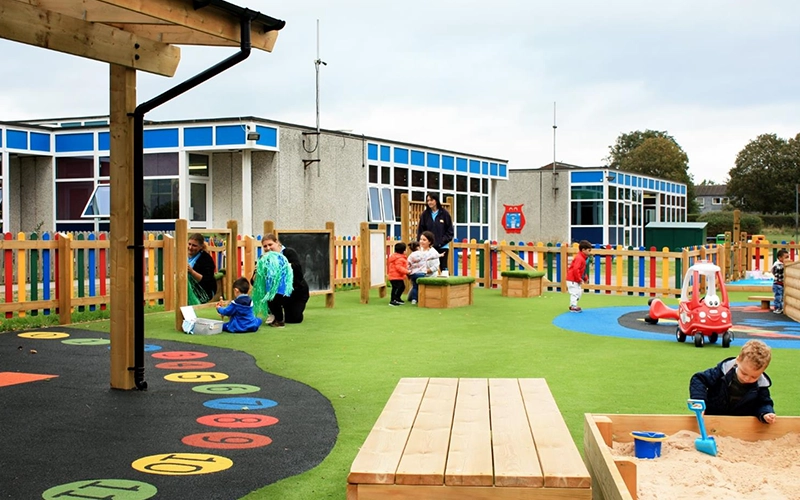
Play Zone
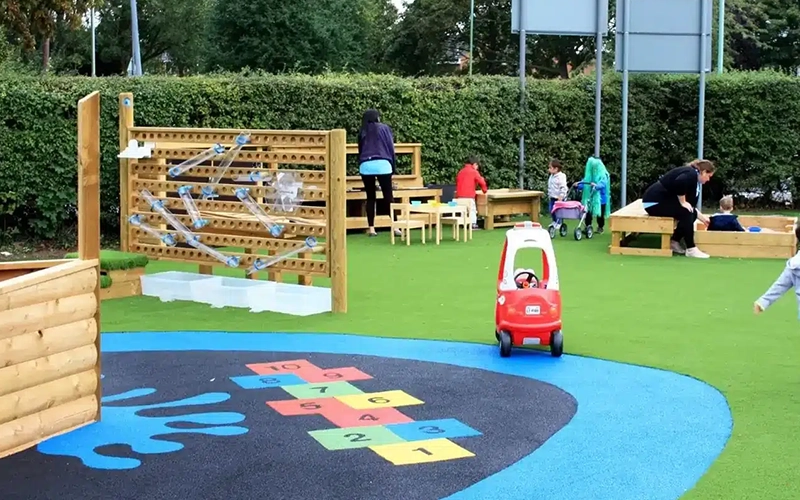
Sensory Garden
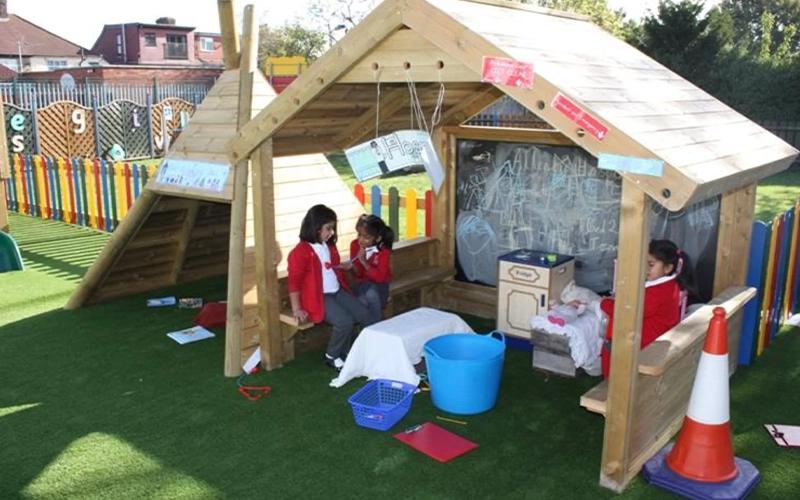
Quiet Reflection Area
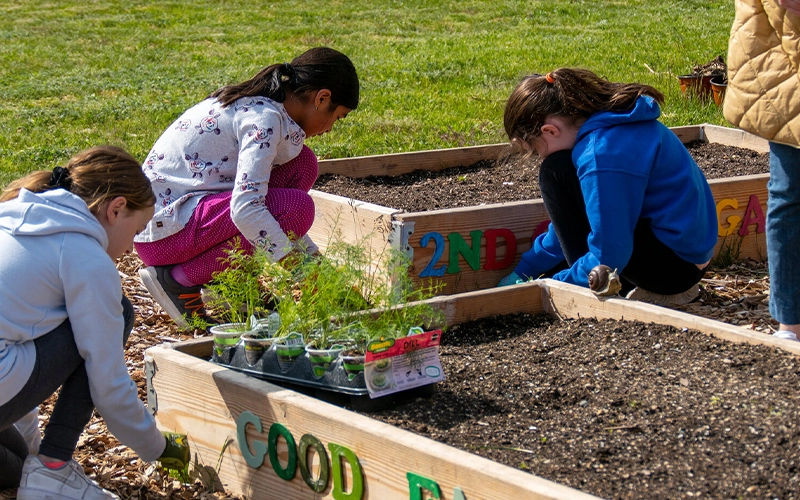
Gardening Zone
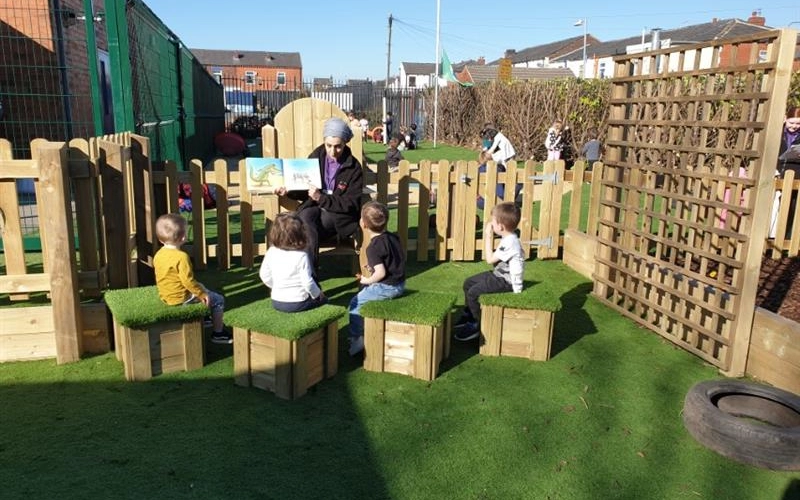
Storytelling Circle
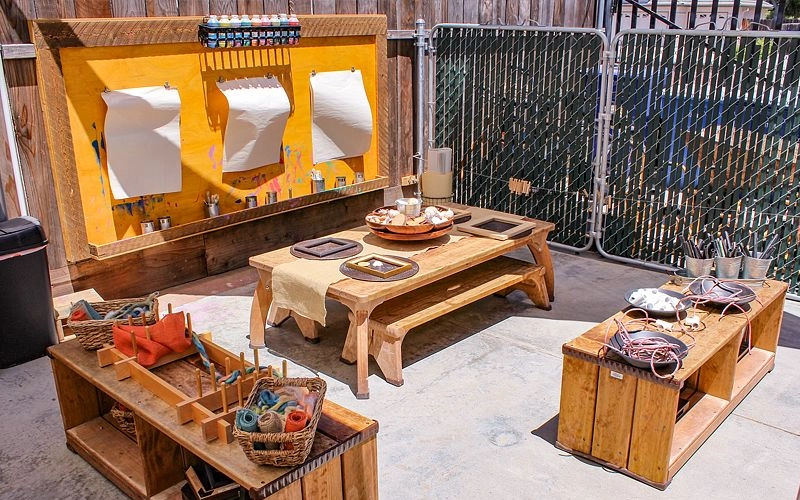
Art and Creativity Station
How Do Children Experience Different Spaces or Areas Designed Outdoors?
Children experience outdoor learning spaces as dynamic, interactive environments that offer sensory, physical, and cognitive engagement. Outdoor spaces for preschoolers typically include areas tailored to active play, quiet reflection, creative arts, and nature-based discovery. Each space allows children to explore their senses and engage with the environment uniquely, fostering holistic development and a deep appreciation for the outdoors.
Different areas within outdoor learning environments, such as play zones, sensory gardens, and art stations, allow children to explore, experiment, and learn at their own pace. A well-designed outdoor space provides diverse options that encourage children to engage in group activities, enjoy solo exploration, and take on challenges that develop their skills and confidence. Whether digging in a garden, jumping on balance beams, or quietly observing insects, each area offers valuable learning experiences tailored to young children’s developmental stages.
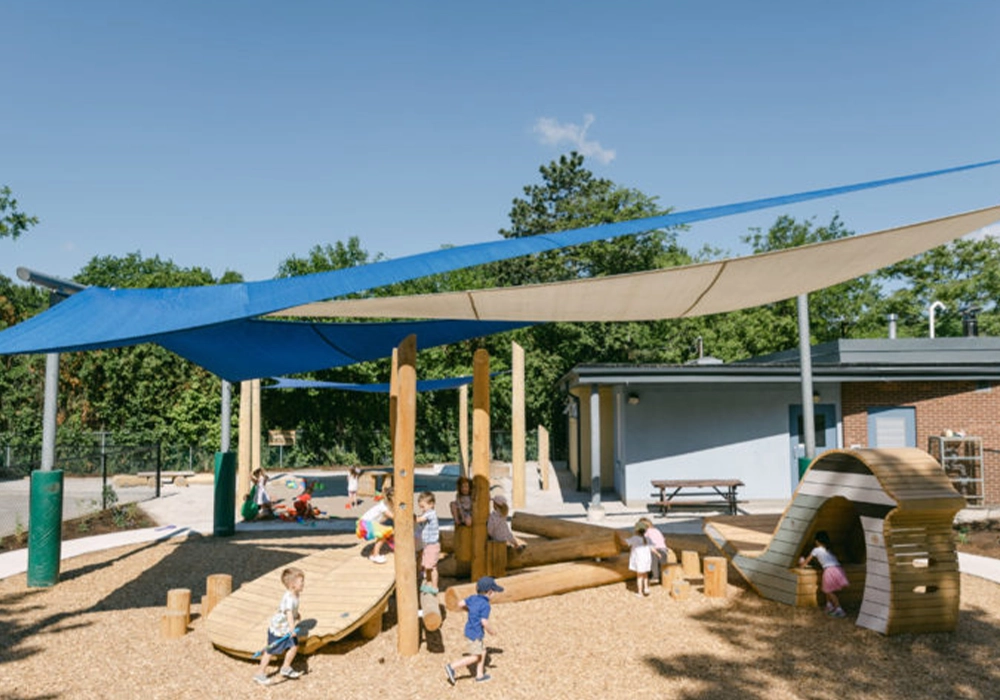
The Advantages of Outdoor Learning Environments vs. Indoor Learning Environments
Outdoor learning environments offer unique developmental advantages compared to indoor spaces, enriching children’s experiences with fresh air, natural light, and open-ended play opportunities. Indoor classrooms are structured and controlled but often lack the space and sensory stimulation that outdoor environments provide.
-
Enhanced Sensory Experiences Outdoor environments expose children to textures, colors, sounds, and smells not typically available indoors. Natural elements like water, grass, and sand provide rich sensory inputs that are vital for early development.
-
More Freedom for Physical Activity Unlike confined indoor spaces, outdoor environments allow children to run, jump, and explore, supporting physical health and energy release.
-
Open-Ended Play and Exploration Outdoor environments encourage children to explore creatively, solve problems, and learn independently without rigid structure. This promotes critical thinking, flexibility, and resilience.
-
Connection with Nature Regular outdoor play fosters an appreciation for nature, helping children develop environmental awareness and empathy for living things.
-
Reduced Stress and Improved Wellbeing The natural setting of an outdoor environment has a calming effect, helping children manage emotions and reduce anxiety. Studies show that nature exposure improves mood and resilience, supporting better mental health.
-
Encouragement of Risk-Taking and Resilience Outdoor play often involves taking safe, manageable risks—like climbing or balancing on a beam—that build resilience and self-confidence. These experiences help children understand their own limits and develop self-assurance in facing challenges.
Indoor learning has merits, such as more control over the environment, but it can’t fully replicate the sensory and physical experiences children gain from the outdoors. A well-rounded education for preschoolers ideally incorporates both indoor and outdoor learning.
Key Safety Measures in Outdoor Learning Spaces
Ensuring safety in preschool outdoor learning spaces is essential to creating an environment where children can explore freely without unnecessary risks. Safety measures should include proper supervision, secure equipment, and clear safety protocols.
- Regular Safety Checks: Conducting routine inspections to identify and remove hazards like sharp objects, broken equipment, or poisonous plants is crucial. Ensure that playground equipment and other installations are secure and stable.
- Age-Appropriate Design: Outdoor learning spaces should be designed with age-specific needs in mind. For preschoolers, this includes lower climbing structures, soft ground materials like mulch or rubber, and rounded edges on furniture.
- Supervision and Boundaries: Establishing clear boundaries and supervision protocols is essential in outdoor spaces. Trained adults should monitor children closely and provide guidance when necessary, especially around water features or climbing structures.
- Sun Protection and Weather Considerations: Outdoor play requires measures to protect children from the elements. Providing shaded areas, sunscreen, hats, and appropriate clothing helps reduce sun exposure risks, while weather-resistant equipment ensures durability in various conditions.
- First Aid and Emergency Preparedness: Having accessible first-aid kits and emergency plans for outdoor play areas is crucial. Teachers and staff should be trained in basic first aid and be aware of emergency procedures to respond promptly in case of accidents.
How to Design Accessible Outdoor Learning Spaces
Creating an accessible outdoor learning environment ensures that all children can participate fully in outdoor activities regardless of ability. Accessibility is essential for inclusivity and makes outdoor spaces enjoyable for children with different needs.
Smooth and Navigable Pathways
Adaptive Play Equipment
Multi-Sensory Areas
Clear Signage and Visual Cues
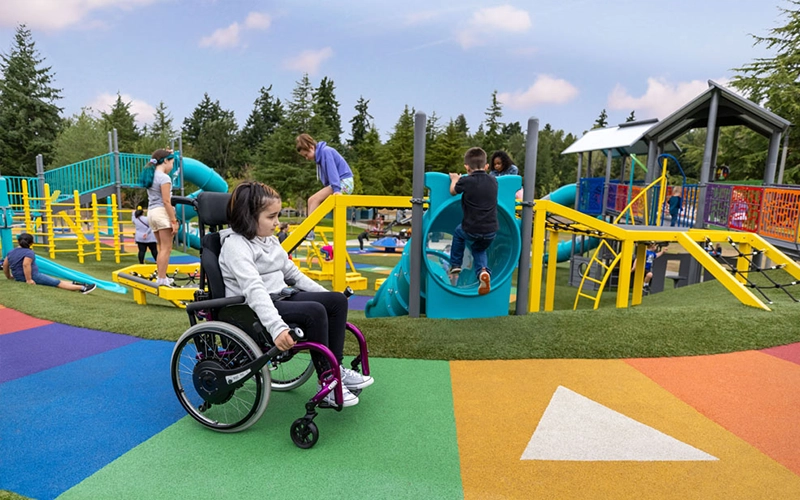
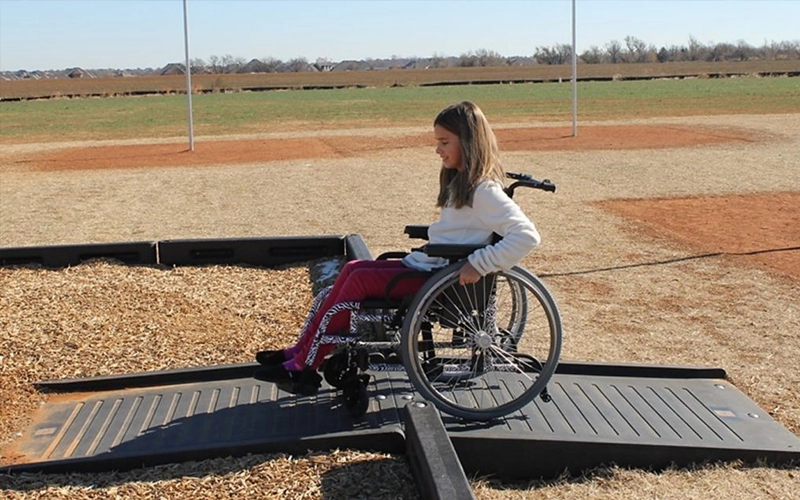
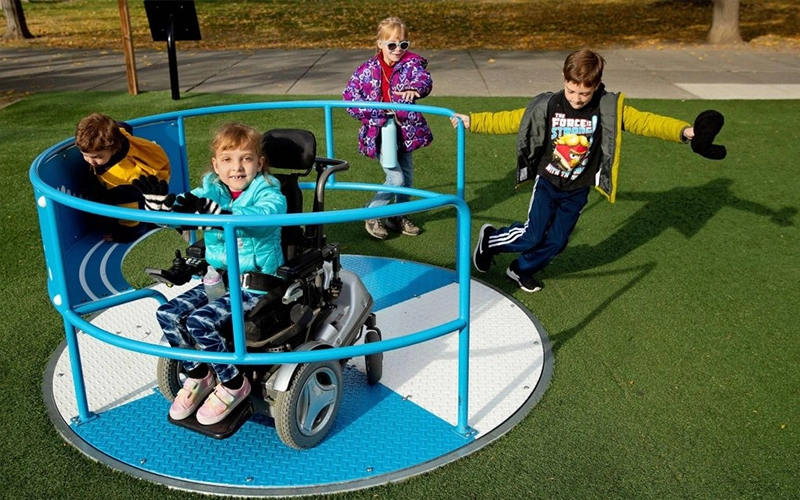
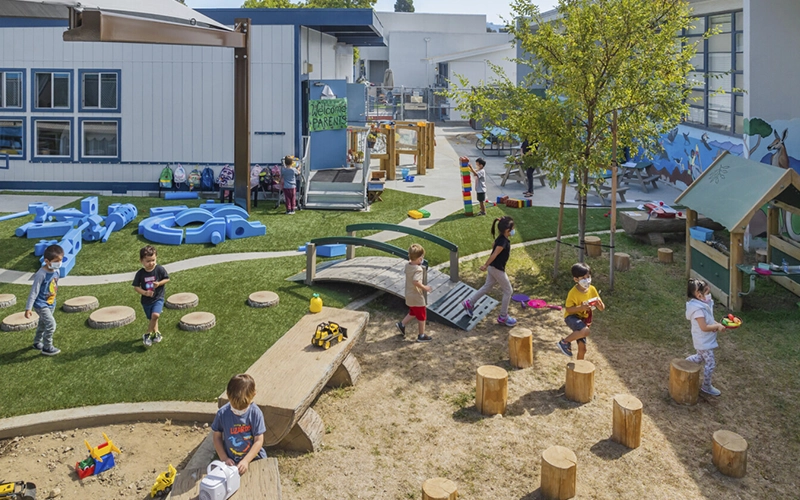
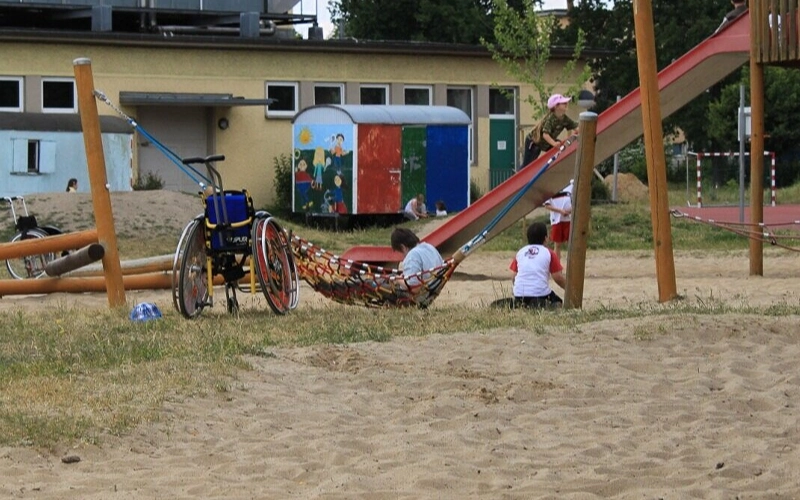
Maximizing the Potential of Outdoor Learning Spaces for Preschoolers
Outdoor learning is an invaluable addition to early childhood education, offering developmental benefits that are difficult to replicate indoors. From enhancing sensory experiences to supporting physical, social, and emotional growth, the outdoors is an unparalleled classroom where young children can thrive. By prioritizing safety, accessibility, and thoughtful design, preschools can create spaces that nurture young minds, fostering curiosity, creativity, and a lifelong connection with the natural world.
Outdoor learning offers a holistic approach that uniquely supports each child’s development. With the correct planning and resources, educators can transform outdoor areas into enriching environments that inspire joy, resilience, and a sense of wonder in every child.
